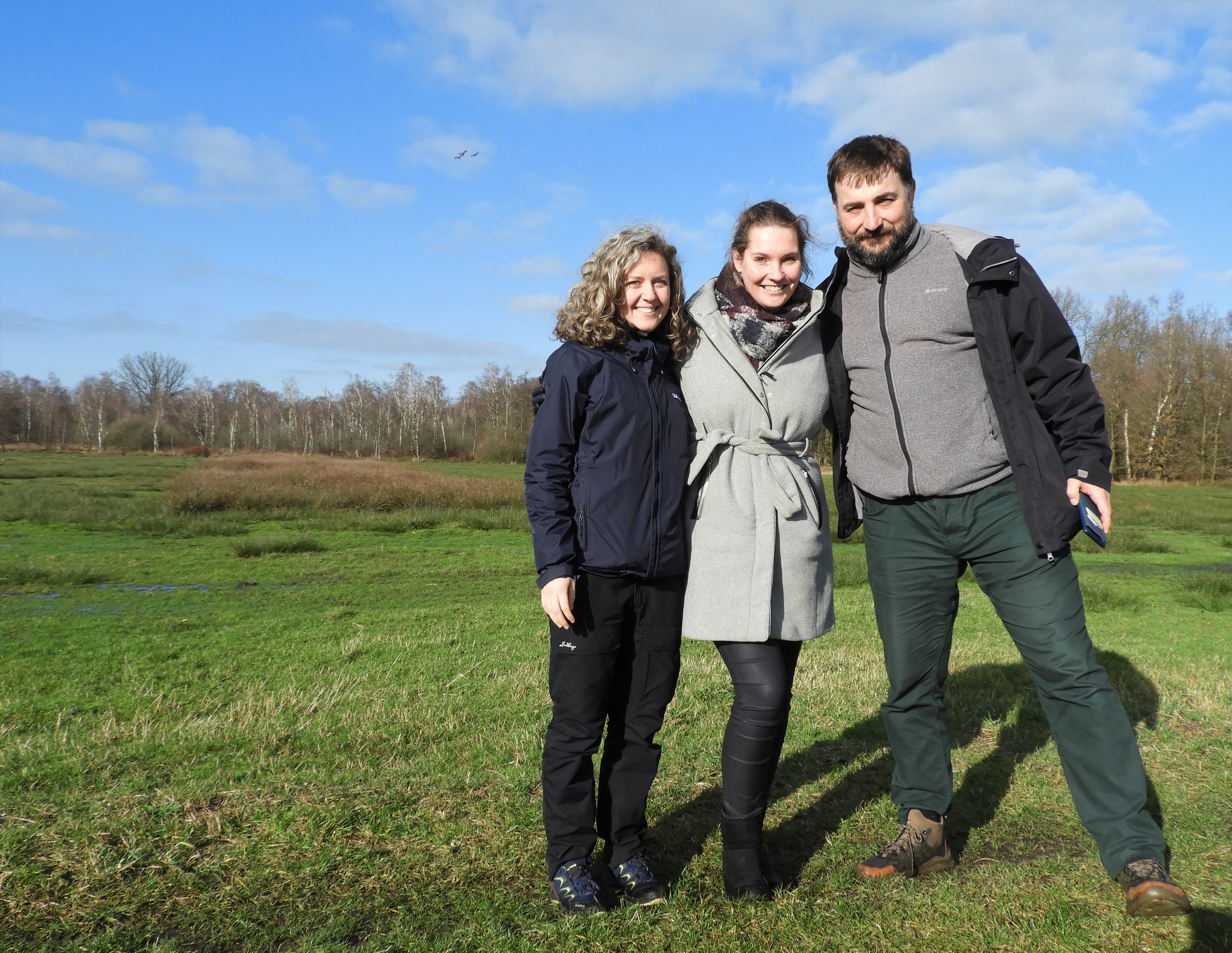There is a first for everything: this year, in which everyone needs to adapt to new and different circumstances, the Eurosite Annual Meeting was organised in an online setting for the very first time.
The event was divided into four morning sessions from 2 to 5 November 2020. Eurosite’s working groups played a vital role in the organisation of the sessions, which focussed on management planning, ecosystem services, peatland restoration and management, and remote sensing.
Peatland restoration and management
On day 3 (4 November 2020), participants were taken on a journey on peatland restoration and management under the guidance of the Peatland Restoration and Management Group’s chair Mr. Paul Leadbitter of the North Pennines AONB Partnership. Mrs. Dianna Kopansky of the United Nations Environment Programme started that journey from a global perspective by introducing the UN’s Global Peatland Initiative (GPI), which Eurosite joined earlier this year. The GPI is an initiative to save peatlands as the world’s largest terrestrial organic carbon stock. Mrs. Kopansky also promoted the UN’s Decade on Ecosystem Restoration (2021-2030) and invited participants to share and promote their work. From a global perspective they ‘zoomed in’ on a European and interregional perspective from the Interreg projects Care-Peat and CarbonConnects, and a national perspective in which the UK Peatland Strategy was explained. Lastly, Paul Leadbitter took participants on a visual trip showing the restoration success in the Pennine PeatLIFE project by means of a video filmed by a drone.
As a second component of the peatland restoration and management session, participants discussed various themes in smaller groups. These themes covered ‘communicating about peatlands and their importance’, ‘evidence gathering’ and the economics of private and blended finance in restoring and protecting peatlands. During a plenary discussion the key messages of each breakout session were fed back to the whole audience. For the communications group they entailed the importance of clear and relevant messages, especially using peer to peer communications and spending time with individuals to get messages across. A way to convince an audience of the importance of peatland conservation could be through using compelling case studies, including finance/funding possibilities. Language use should always be aligned with the kind of audience the message is delivered to (e.g. conservationists, farmers, the general public, etc.). A larger group can be reached through the use of social media, and spokes people can be used to address a relevant audience. Three target groups in communicating about peatland restoration and management should be policy makers, the general public, and businesses. Lastly, the final message to take home was to never be afraid of crazy ideas!
Secondly, the group that discussed evidence gathering brought forward that funders want monitoring and proof/evidence of the benefits of restoration such as biodiversity improvements, carbon reduction, carbon storage increase, water quality increase, and flood reduction. There are thousands of projects globally and thus also in the EU doing restoration work. To store results, a global database is necessary as to see what approaches are working and which are not. Additionally, such a database would provide clarity on how much a site has improved within what time frame, how much is being spent on restoration, etc. This could be led by UNEP or the Global Peatland Initiative (GPI) or another big international organisation to manage and coordinate projects inputting their data. Monitoring needs to be harmonised to ensure replicability and transferability. There needs to be a balance of evidence and analysis so that one benefit does take precedent over another. For example, carbon takes precedent over biodiversity. A last question from this group deals with if biodiversity indicators can be used as a proxy method, i.e. if biodiversity is recovering, should that mean that water quality/supply is improving too? Another example of a proxy method in this case can be using the type and amount of vegetation to measure carbon flux. UAVs are used to measure recovery after restoration, which is a proxy for carbon changes and water flow.
The answers to the question of if private and blended finance is working were that there are gaps in public/private and blended finance for support for healthy peatlands, for example in knowledge: where does one go to find out what finance is available? There does not seem to be a point of contact for landowners/projects for funding support, although there are lots of different models for funding that all come with different rules, restrictions and players involved. Another hurdle are the timescales for delivery: capital funding is often constrained to the very beginning of a project and does not support the longer-term management goals. The UK Peatland Code tries to address this through long term agreements and management payments received as C units are released. Results-based reporting pushes for inefficient spend, whereas a lack of monitoring and evidence of efficiency and efficacy of peatland restoration can lead to low investor confidence- if results/benefits cannot be quantified in numbers investors tend to be cautious. Lastly, private finance to support adaptive and sustainable management through the production and market of agricultural products (e.g. a change in peatlands use from traditional agriculture to novel crops can support existing and new industries, such as sphagnum farming replacing peat compost in horticulture).
Eurosite is working to create a Europe where nature is cared for, protected, restored and valued by all. They do this by providing practitioners with opportunities to network and exchange experience on practical nature management. They are a network of natural site managers bringing together non-governmental as well as governmental organisations, and individuals committed to their vision.
Please find more information on the Eurosite Annual Meeting 2020, including presentations of speakers, here.
To join the Eurosite network, have a look at their website or contact info@eurosite.org for more information.

